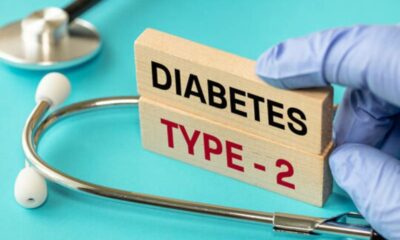As a parent, your child’s health is your top priority. This comprehensive guide empowers you to recognize the warning signs of diabetes in children, allowing for early detection and effective management. By understanding the symptoms and taking proactive steps, you can ensure your child receives the necessary care and lives a healthy life.
Understanding Diabetes in Children
- Types of Diabetes in Children:
- Briefly introduce the two main types of diabetes in children: type 1 and type 2.
- Explain that type 1 diabetes is an autoimmune condition where the body attacks insulin-producing cells, while type 2 diabetes is characterized by insulin resistance or deficiency.
- The Importance of Early Detection:
- Emphasize the importance of early detection and treatment to prevent complications associated with uncontrolled diabetes.
- Early intervention can significantly improve a child’s long-term health outcomes.
Warning Signs and Symptoms to Watch For
- Increased Thirst and Urination:
- Explain how excessive thirst and urination are classic signs of uncontrolled blood sugar levels.
- Encourage parents to monitor their child’s bathroom habits and fluid intake.
- Unexplained Weight Loss:
- Discuss how even without changes in appetite, children with diabetes may experience weight loss due to the body’s inability to utilize glucose properly for energy.
- Fatigue and Lethargy:
- Explain how constant fatigue and low energy levels can be a sign of high blood sugar and the body struggling to function effectively.
- Increased Hunger:
- Briefly discuss how a child may feel hungrier than usual despite eating normally, as the body is unable to utilize glucose for energy.
- Blurred Vision:
- Explain how high blood sugar can affect the lenses in the eyes, leading to temporary blurred vision.
- Encourage seeking medical attention if vision changes occur.
- Slow Healing Wounds and Frequent Infections:
- Discuss how high blood sugar levels can impair the body’s healing process and increase susceptibility to infections, including skin infections or urinary tract infections.
- Bedwetting:
- Address bedwetting in older children who were previously potty-trained, as it can be a sign of uncontrolled blood sugar and increased urine production.
Additional Signs to Consider:
- Fruity-Smelling Breath:
- Briefly mention that in severe cases of undiagnosed type 1 diabetes, a fruity-smelling breath can occur due to the body breaking down fat for energy instead of glucose.
- Irritability and Mood Swings:
- Briefly discuss how fluctuations in blood sugar levels can affect a child’s mood and behavior, leading to irritability or mood swings.
Risk Factors for Childhood Diabetes
- Family History:
- Explain that having a parent or sibling with diabetes increases a child’s risk.
- Genetics:
- Briefly introduce the genetic component of type 1 and type 2 diabetes.
- Being Overweight or Obese:
- Discuss how excess weight, particularly around the waist, can increase the risk of type 2 diabetes, especially in children with a genetic predisposition.
- Certain Medical Conditions:
- Briefly mention that certain medical conditions, such as polycystic ovary syndrome (PCOS), can increase the risk of gestational diabetes (diabetes during pregnancy), which can put a child at higher risk for type 2 diabetes later in life.
When to See a Doctor:
- Urge parents to seek immediate medical attention if their child experiences:
- Severe thirst, excessive urination, rapid weight loss, or persistent vomiting.
- These can be signs of diabetic ketoacidosis (DKA), a serious complication of type 1 diabetes.
- Encourage consulting a doctor if any of the other warning signs persist or cause concern.
Diagnosis and Treatment of Childhood Diabetes
- Diagnostic Tests:
- Briefly explain the different blood tests used to diagnose diabetes, such as fasting blood sugar test, A1C test, and oral glucose tolerance test (OGTT).
- Treatment Options:
- Briefly discuss how treatment plans for childhood diabetes are individualized and may include:
- Insulin injections for type 1 diabetes.
- Medication, lifestyle changes, and potentially insulin for type 2 diabetes.
- The Importance of Blood Sugar Monitoring:
- Emphasize the importance of blood sugar monitoring for children with diabetes to manage their condition effectively.
- The Role of a Diabetes Care Team:
- Highlight the importance of working with a healthcare team, including a pediatrician, pediatric endocrinologist, diabetes educator, and registered dietitian, to create a comprehensive care plan that addresses the child’s specific needs and ensures optimal management of their diabetes.
Living Well with Childhood Diabetes
- Healthy Eating:
- Emphasize the importance of a balanced diet that includes whole grains, fruits, vegetables, and lean protein sources.
- Encourage parents to work with a registered dietitian to create a personalized meal plan for their child.
- Physical Activity:
- Discuss the benefits of regular physical activity for children with diabetes, including improving blood sugar control and overall health.
- Encourage finding activities the child enjoys, like playing outside, swimming, or team sports.
- Maintaining a Healthy Weight:
- Briefly discuss how weight management, if needed, can be achieved through healthy eating and physical activity.
- The Importance of Social and Emotional Support:
- Address the emotional challenges children with diabetes may face.
- Encourage open communication, providing support and reassurance.
- Consider support groups or resources specifically for children with diabetes.
- Empowering Your Child:
- Encourage parents to involve their child in their diabetes management as much as age-appropriate.
- This fosters independence and a sense of control over their health.
Additional Tips for Parents
- Staying Organized:
- Offer tips for managing medications, blood sugar monitoring supplies, and healthy meals on the go.
- Encourage creating a routine to ensure consistency in diabetes management.
- School Communication:
- Discuss the importance of working with the child’s school to ensure their diabetes needs are met during the day.
- This may involve providing the school nurse with information and medications.
- Staying Positive:
- Emphasize the importance of maintaining a positive attitude and focusing on the many ways children with diabetes can live healthy and fulfilling lives.
- Encourage celebrating successes and milestones along the way.
Building a Support Network:
- Online Resources:
- Provide a list of reputable online resources for parents of children with diabetes, including websites of diabetes organizations, government health agencies, and support groups.
- Support Groups:
- Encourage connecting with other parents of children with diabetes for information, emotional support, and a sense of community.
- Healthcare Professionals:
- Reiterate the importance of working closely with your child’s healthcare team for ongoing support, guidance, and adjustments to the treatment plan as needed.
Conclusion: Empowering Your Child’s Health
By understanding the warning signs of diabetes in children and taking proactive steps, you can ensure your child receives the necessary care and thrives despite the diagnosis. Remember, with a supportive healthcare team, healthy lifestyle choices, and a positive attitude, children with diabetes can lead active and fulfilling lives. This guide equips you with the knowledge and resources to navigate this journey and empower your child’s health.

 Diabetology1 week ago
Diabetology1 week ago
 Diabetology4 days ago
Diabetology4 days ago
 Diabetology8 hours ago
Diabetology8 hours ago
 Diabetology9 hours ago
Diabetology9 hours ago









